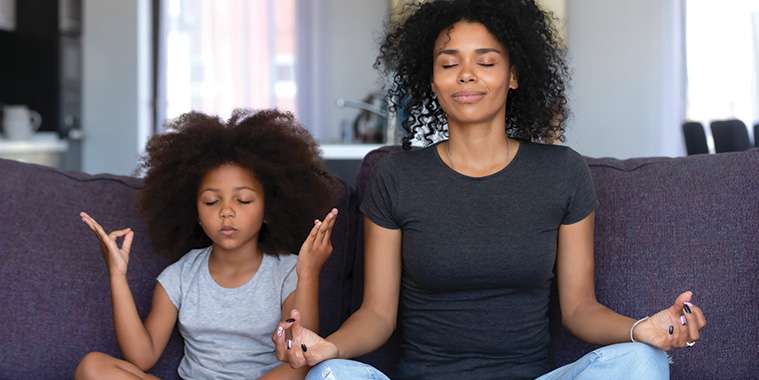We could all use some calm and zen. Transforming a room into a
dedicated yoga/meditation space — even if you try to be Zen about it — can sound daunting. How do you even start replicating the peaceful vibe your favorite studio delivers time and time again?
Meditation and yoga are all about connecting the mind and body with the universe, so it’s essential that the [room] enhances the experience. The space you create should be reflective of you and your nature.
There are no rules. But keep your drishti (to nonyogis, that would be your focused gaze) on these crucial concepts:
1. Less is more
No one’s saying your space needs to be devoid of design, but it should be free of visual clutter.
An excess of ‘stuff’ can be unsettling to the eye and ultimately cause the mind to wander. If possible, empty the room first and then add back only what you need or truly want.
2. Create a focal point
If your studio has a well-situated window, you’re in luck! You just found yourself a lovely and natural focal point.
Your practice will benefit from natural views and ever-changing light. If you choose to cover your windows (because maybe you don’t want your neighbours to watch you deep-squatting in horse pose for two minutes), keep it easy and ethereal: Use shoji paper shades or soft sheers.
No windows? No problem. You can also create a focal point on a blank wall. Consider a mandala for artwork — this geometric figure represents the universe in Buddhism and Hinduism.
3. Colour yourself serene
Whether you go with light or dark colours is a personal preference, but stay away from vivid colours, which can create a mental distraction.
A grass cloth or bamboo wall covering’s also an alternative to paint. It adds warmth, subtle coloration, and textural variations, and furthers the Zen-like vibe of the space.
4. Get your glow on
Dimmer switches, lanterns, or well-spaced candles will add to the ambiance of your hopefully sacred space. You can even incorporate sconces since the shadows they cast will serve as an additional design element.
5. Bring in the outdoors
Natural elements have an inherently restorative quality and enhance feelings of harmony and balance. Bring in something from the outdoors that resonates with you, be it crystals, shells, river rocks, branches, or a little greenery.
6. A little tech is OK
Bluetooth speakers in the walls can help surround you with music rather than the sounds of your kids arguing just outside the door. And don’t diss the idea of a flat screen. It’s not so you can watch “The Bachelor” while you’re in shoulder stand pose, mind you, but so you can stream yoga classes during your practice.
7. Reflect inward
Having a wall of floor-to-ceiling mirrors is the ideal, but floor or hanging mirrors can also help you assess whether you’re aligned correctly during your practice.
Since many yoga poses are done in a seated or reclined position, make sure you put your mirror at a height that offers a clear sight line from a floor position. Follow the manufacturer’s instructions carefully. You don’t want a mirror falling on you while you’re relaxing during shavasana.
8. Contain your clutter
Blocks, straps, and towels have to go somewhere. If there’s a closet in the room, use it to organize your accessories. Hang your mat over the rod and install shelves to contain small props. No closet space? Consider bringing in a small armoire or chest of drawers.
9. Work with what you have
Joy Rains, author of “Meditation Illuminated: Simple Ways to Manage Your Busy Mind,” knows a woman who didn’t make a dedicated yoga room. She simply carved out a small space to quiet her mind next to the dryer in her laundry room. See? You don’t need an elaborate temple to master the art of meditation.
If space and time are in short supply, consider investing in a screen or curtain that will give you the
illusion of sacred space.
Work with what you have, and breathe.
— realtor.com



